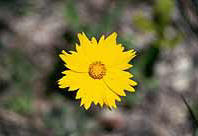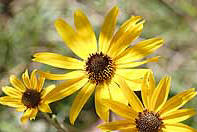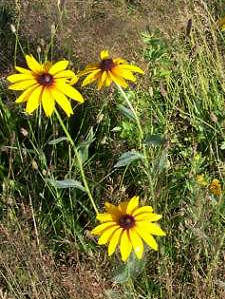 What's the second biggest hobby in our country, second only to gardening? You guessed it - bird watching. What better way to enjoy the outdoors than to combine your
two favorite hobbies - gardening and bird watching.
What's the second biggest hobby in our country, second only to gardening? You guessed it - bird watching. What better way to enjoy the outdoors than to combine your
two favorite hobbies - gardening and bird watching.
To attract birds to your yard, you need to think the way a bird does. Is there shelter? How about food? And don't forget water. Now, how are you going to provide all these things for the visiting birds?
Building a backyard bird habitat is both fun and easy to achieve, especially if you are a gardener. Plants are the most important element in creating a backyard habitat. Choose those that can be a source of food or shelter. For example, shrubs that
berry will provide food for the birds. Cone bearing evergreens serve as a food source and more importantly as shelter.
|

Coreopsis lanceolata
|
|

Rudbeckia sp. (Coneflower)
|
Select plants that will bear fruit at different times. For instance, serviceberry has fruit in late spring through early summer. Blackberries, raspberries, elderberries and viburnums bear fruit in the summer, while pyracantha, hawthorns and
chokeberry bear fruit in the fall. Summer perennials also provide food. The composite flowers, like rudbeckia, coreopsis, and purple coneflowers provide seeds that many birds enjoy.
"Layering" your landscape is important when planting trees, shrubs and perennials. Most of the activity will occur in and around the plants. In order to enjoy watching the birds, you need to be sure the plants will be visible from a window or an
often used outdoor sitting area. Layering simply means placing the taller plants to the rear of your backyard habitat, typically far away from the house. The shrubs should be located in the middle and the perennials in the foreground. What you will be doing is creating an
oasis near and around your window or sitting area, bringing the birds closer into view.
Cover needs to be near by for the birds to feed safely and feel comfortable. They need to be able to take quick cover if they feel they are in danger. Evergreen shrubs, like holly, mugo pines, junipers and yews, can provide this shelter. Deciduous
shrubs can also provide protection for the birds as well as nesting areas. Typically, birds will build their nests 5 to 8 ft. from the ground.
Don't forget to use vines when selecting your bird-loving plants. Vines can be a source of nesting material, a home in which to nest and a source of food. Boston Ivy is a good example as well as honeysuckle (which hummingbirds love).
Besides food and shelter, birds need a place to drink and bathe. Something as simple as a bowl of water will provide just what they need. They are attracted to the sound of water, so a fountain that has moving water will cause a bird to stop and see
what they may be missing. Small ponds and pools of water are great spots for birds to bathe. Birdbaths, pools or ponds should not have plant material around the water's edge. This would provide a great hiding place for cats and other predators. They should be located near
shrubbery that is within a short flight to protection, but not surrounded by plants.
|

Black-eyed Susan
Rudbeckia hirta |
Now that you know the direction you should go when planning your landscape for birds, how about some suggestions for plant selection. The closest layer, the shortest in your view, should be your annuals and perennials. Some choices for annuals are
marigolds, portulaca, sunflowers, zinnias, cosmos and bachelor buttons. Perennials you can choose from are black-eyed susans, butterfly weed, columbine, coreopsis, scabiosa daisies, purple coneflowers, and ornamental grasses. In the mid section include some evergreen shrubs
that are good for shelter: bayberry, boxwood, cherry laurel, holly, juniper, mugo pine, and privet. Also good for shelter and food are the deciduous shrubs. Some suggestions for this group are viburnums, blackberries, red twig and silky dogwoods, witchhazel, shrub roses,
and spicebush. Some good food-and-shelter trees for the tallest, farthest away layer are birch, dogwood, ash, hawthorn, maple, and oak. Some vines include honeysuckle, boston ivy, and akebia.
When planning your habitat, be aware of the potential height and width of the shrubs and trees. This is probably one of the biggest mistakes of the novice. You must keep in mind the size of the plants in the nursery or garden center is only the
beginning. Crowding the plants may only cause trouble in the long run. You need to allow space for the plants to grow and develop properly.
As you can see, there are many plants that will attract birds to your yard. With proper planning, you can have a backyard habitat for birds of all kinds. Before you know it, you will not only be a gardener, but also an avid backyard birder.
Read other articles on birds, wildlife & beneficial insects
Read other articles by Mary Ann Ryan